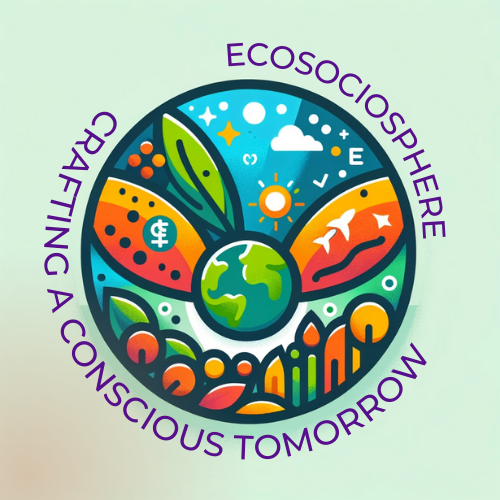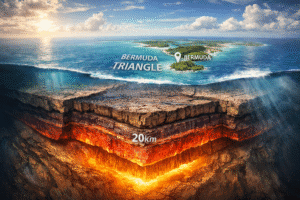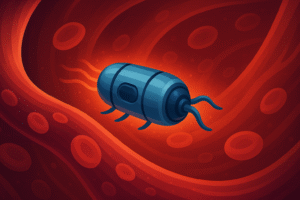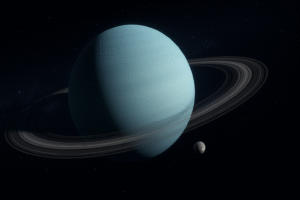Fun Fact: Only a handful of animals—like great apes, dolphins, elephants, and magpies—have ever passed the mirror test, a key experiment in measuring self-awareness.
Imagine walking by a mirror and seeing your reflection for the first time. Do you recognize that face as your own—or do you mistake it for another creature? Now imagine you’re a chimp, or a dolphin, or even a crow, facing the same scenario.
This is the essence of the mirror test, a deceptively simple yet deeply philosophical experiment that asks: Which animals understand that they are seeing themselves? And more provocatively: What does it mean to know you exist?
This blog explores how animals respond to their reflections, what those reactions reveal about consciousness, and why the answer might be less clear—and more inspiring—than we think.
What Is the Mirror Test?
The mirror self-recognition test (MSR) was developed in 1970 by psychologist Dr. Gordon Gallup Jr. The premise is simple: place a mark on an animal’s body—usually on the face or head—where they can’t see it without a mirror. Then, provide a mirror.
If the animal uses the mirror to inspect or touch the mark on their own body, it suggests they recognize the reflection as themselves, not another animal.
This ability implies self-awareness, a cognitive milestone once thought to be uniquely human.
Animals That Have Passed the Mirror Test
Despite decades of testing across species, only a select few have reliably passed the mirror test:
Great Apes (Chimpanzees, Bonobos, Orangutans)
Gallup’s original subjects—chimpanzees—showed clear signs of mirror self-recognition. They touched the marks, made funny faces, and even examined parts of their bodies they’d never seen before.
Dolphins
In 2001, researchers at the New York Aquarium found that bottlenose dolphins used mirrors to inspect marked areas. They twisted and turned to get a better view—suggesting complex bodily self-awareness.
Elephants
In 2006, an elephant named Happy at the Bronx Zoo passed the test. She used her trunk to explore a white mark placed on her forehead.

Eurasian Magpies
A 2008 study stunned the scientific community when magpies—a species of bird—passed the test. This was the first time mirror self-recognition was observed in an animal without a neocortex (the part of the brain typically associated with higher reasoning).
Ants (Maybe)
A 2015 study on ants suggested possible self-recognition when they attempted to clean marks off themselves while in front of a mirror. The results are debated, but they’ve opened the door to rethinking insect intelligence.
Animals That Failed—But Not Necessarily
Dogs, cats, monkeys, pandas, and parrots often “fail” the mirror test. But here’s the catch: failure doesn’t mean they lack self-awareness. It may just mean they don’t care about marks—or they perceive mirrors differently.
Example: Dogs
Dogs often treat their reflection like another dog—or ignore it entirely. But they pass the “sniff test”: when presented with their own scent versus another dog’s, they show more interest in the unfamiliar smell. This has led some scientists to argue that dogs may be olfactorily self-aware, not visually.
Which raises a deeper question: Are we testing animals on human terms and declaring them unintelligent when they don’t think like us?
What the Mirror Test Really Measures
At its core, the mirror test asks: Can an animal mentally step outside itself and recognize that “I am me”?
This ability, called metacognition, is closely tied to:
- Empathy
- Planning for the future
- Moral reasoning
- Creativity
- Even grief and spirituality
Animals that pass the mirror test likely possess some degree of this higher-order thinking. But many scientists now believe that self-awareness exists on a spectrum—not as a binary yes/no test.
Case Study: Alex the Parrot
Though he failed the mirror test, Alex, the African Grey parrot, trained by animal psychologist Dr. Irene Pepperberg, displayed remarkable cognitive abilities—labelling objects, understanding concepts like “bigger” and “same,” and even showing signs of emotional intelligence.
When Alex died in 2007, his last words were reportedly: “You be good. I love you.”
Mirror test or not, that sounds like consciousness.

Rethinking Consciousness: Beyond the Mirror
The mirror test is iconic—but flawed. It privileges visual self-awareness, which may be irrelevant for animals that rely more on smell, touch, or sound.
Some critics argue that failing the mirror test is like judging human intelligence by echolocation. It’s not that we fail—it’s that it’s not our domain.
Moreover, some animals may understand mirrors but not care to engage. Others might learn mirror behaviour over time, like some monkeys and pigs in experimental settings.
The bigger lesson? We should stop asking, “Do animals think like humans?” and start asking, “What is it like to be them?”
Why It Matters: Ethics and Empathy
Recognizing animal consciousness isn’t just philosophical—it’s ethical.
If elephants can recognize themselves in a mirror, mourn their dead, and show empathy—how should we treat them in zoos, circuses, or captivity?
If whales have complex social lives and cultural transmission—should they be kept in aquariums?
Understanding that other animals may possess forms of selfhood makes it harder to justify cruelty or exploitation. It pushes us toward compassion—not just for the intelligent, but for all life forms with their own way of being.
Conclusion: The Mirror Isn’t the Only Test
The mirror test showed us something astonishing—that some animals see themselves not just in mirrors, but in the world. They may dream, remember, plan, love, grieve, and imagine.
But even those who “fail” the test aren’t failures. They may be aware in ways we simply don’t yet understand.
Perhaps the deeper mirror is not the glass one, but the way we reflect on our assumptions about intelligence, consciousness, and value.
Because the question isn’t whether animals are like us. It’s whether we’re wise enough to see how different—and beautifully aware—they might be.
Author’s Note
This blog is a celebration of minds that don’t look like ours. In studying other animals, we don’t just learn about them—we learn about the limits of our own perspective. May we keep widening the frame.
G.C., Ecosociosphere contributor.




